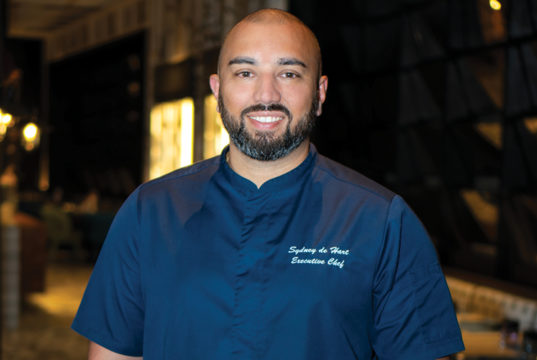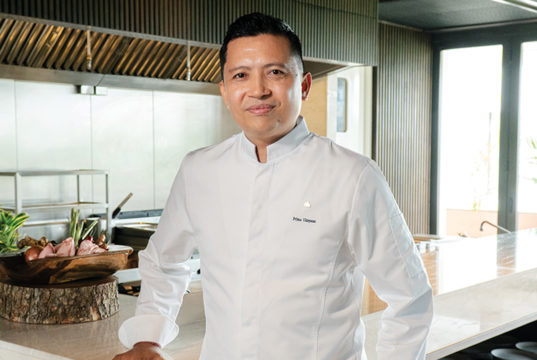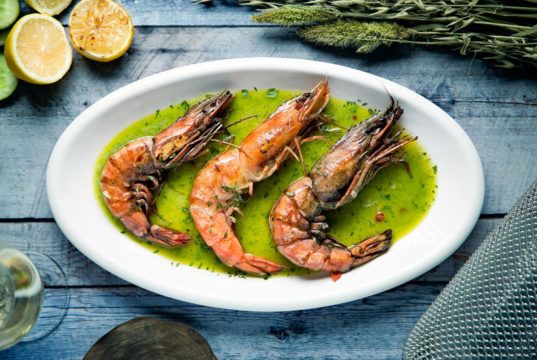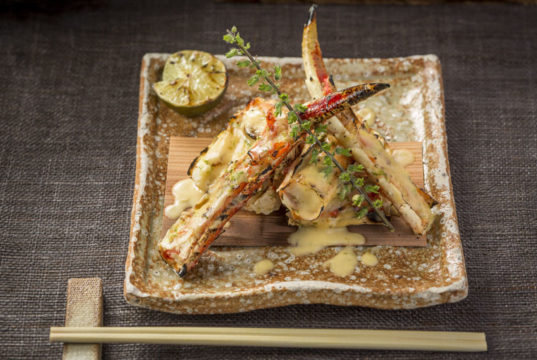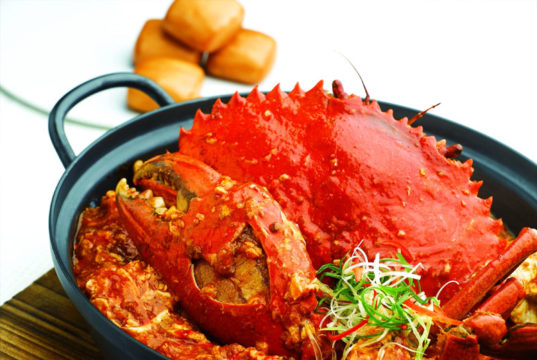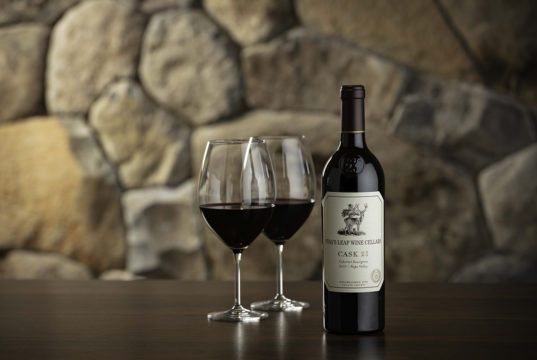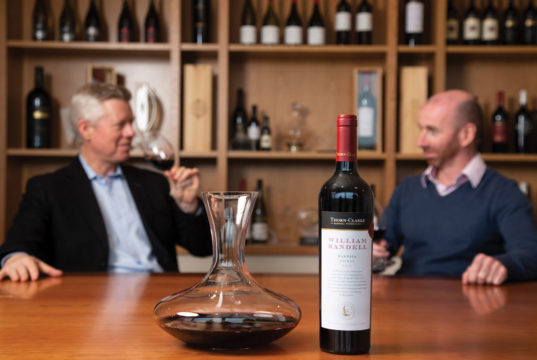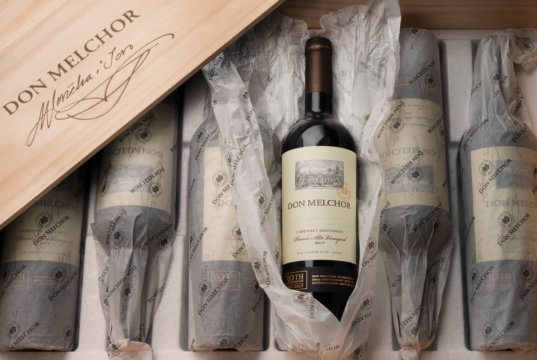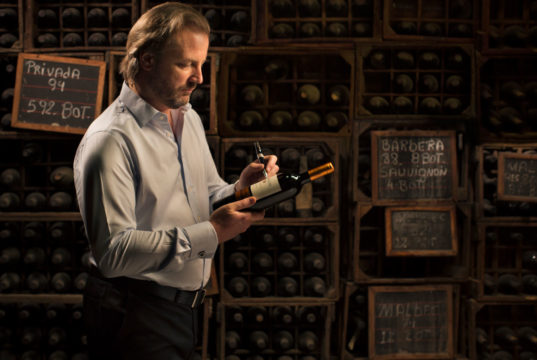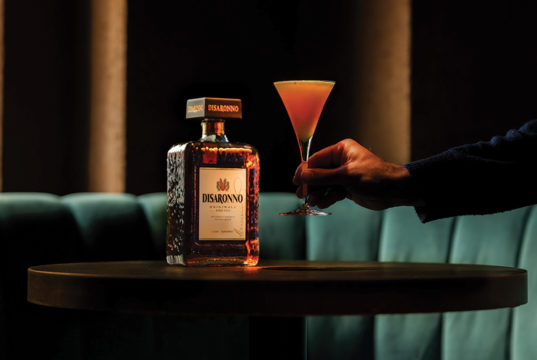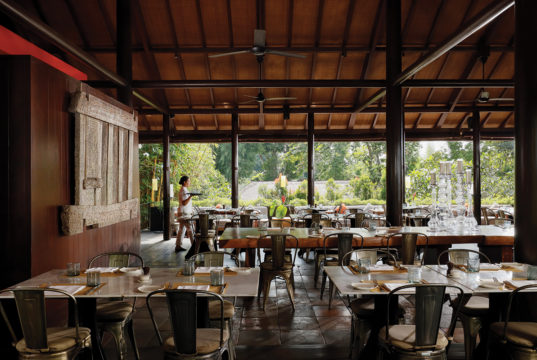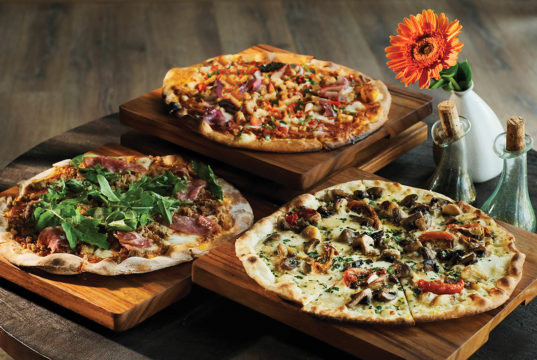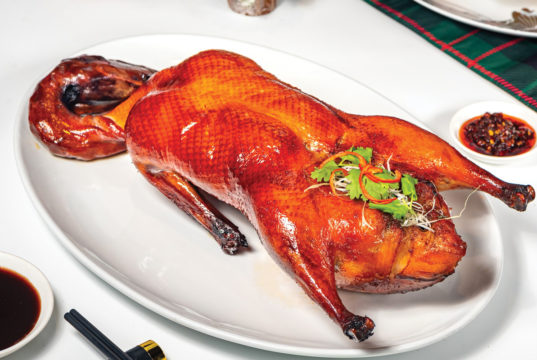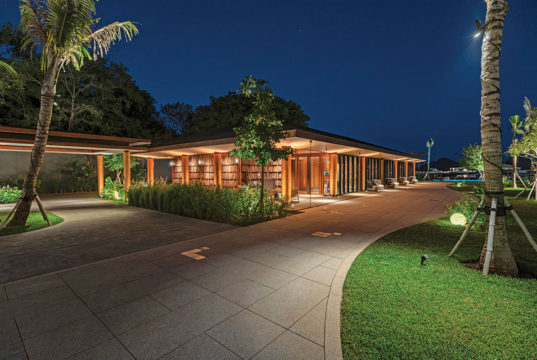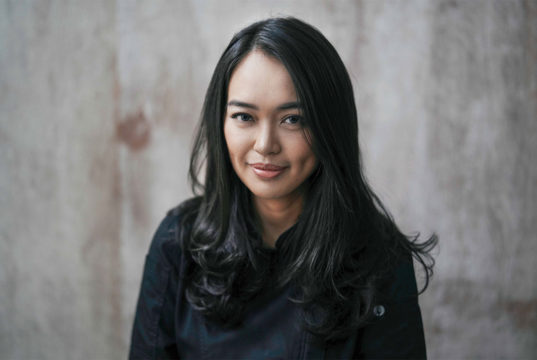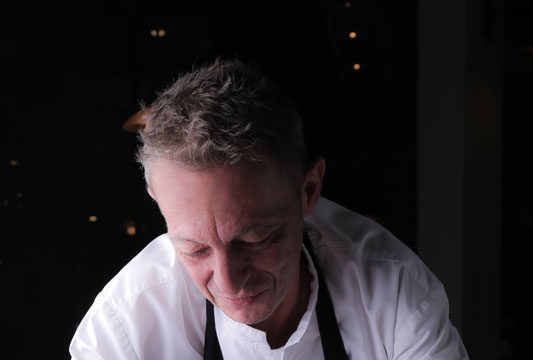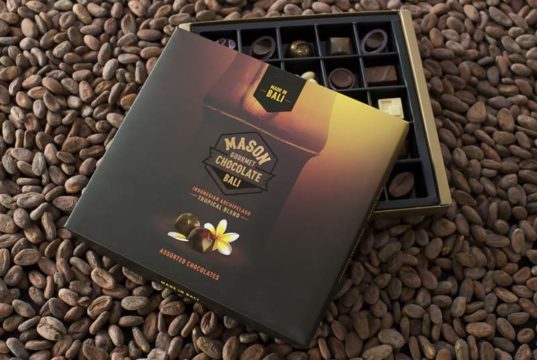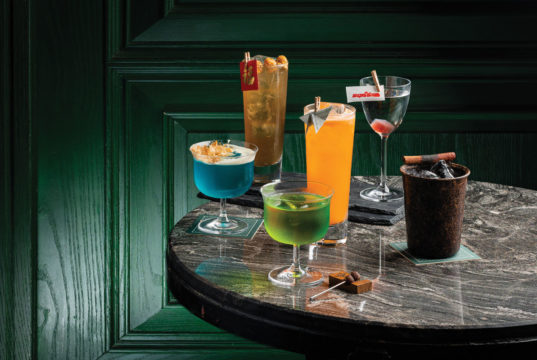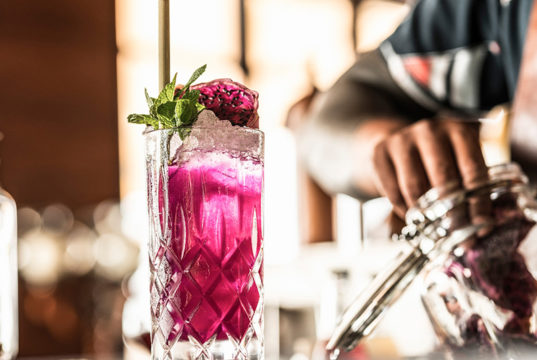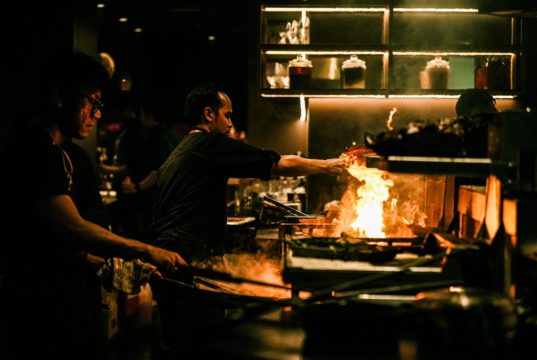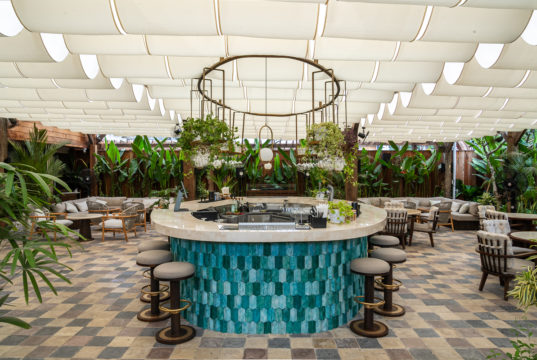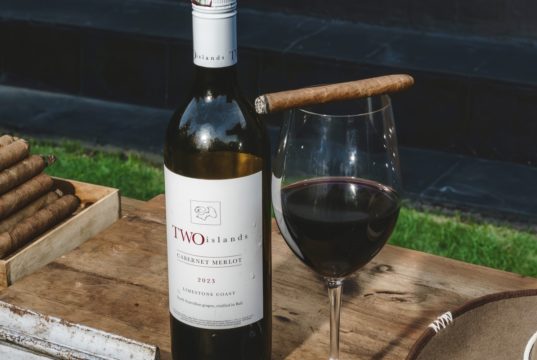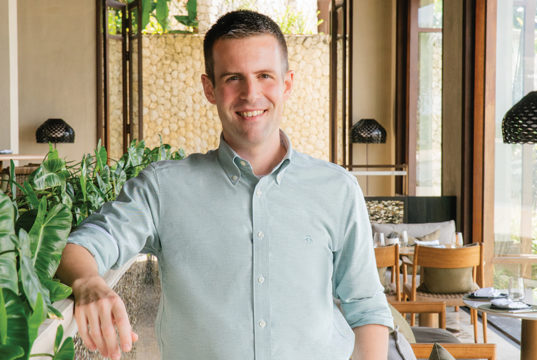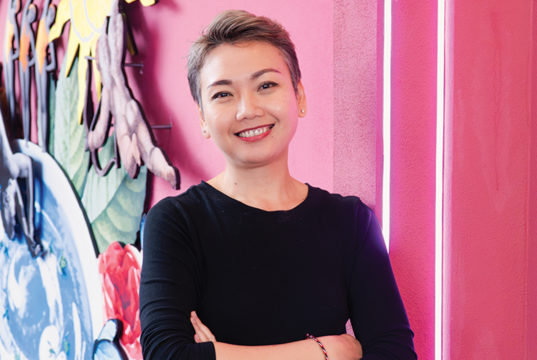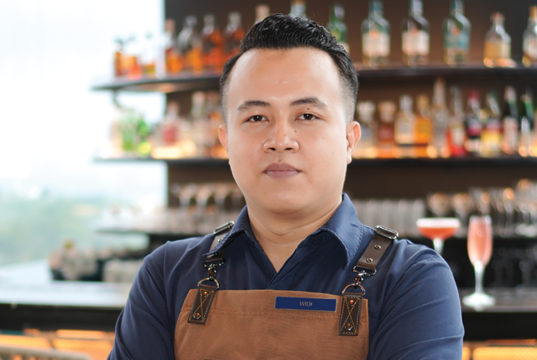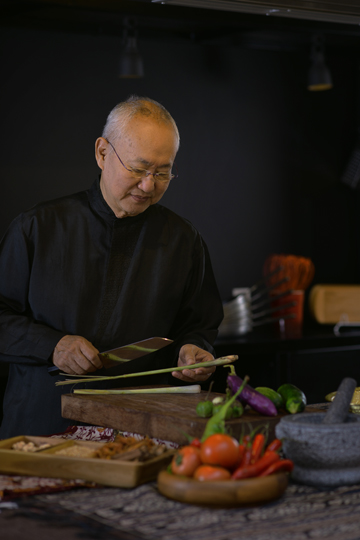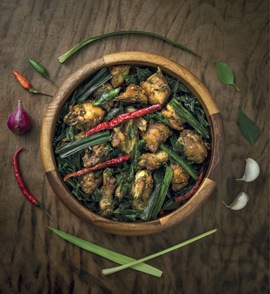As one of Indonesia’s leading culinary minds, William Wongso has earned a respected reputation as a food expert, making it his life’s work to preserve and illuminate authentic Indonesian dishes from across the archipelago. We had the opportunity to speak with him at the launch of his new book, Flavors of Indonesia: William Wongso’s Culinary Wonders.
–
By Jake Fredericks
E : We are excited to hear that you have a new book coming out – can you give our readers a behind-the-scenes look at the work that went into it?
A: I’ve been documenting traditional markets and the traditional food scene for the past 35 years and a lot of the work that I have done has gone into the book. I am totally focused on the food and the culinary heritage; I am not a writer, so I have an excellent editor and a reliable publisher. Actually the most important thing about the launch of this book is my publisher. He is very persistent and would go after me when I was travelling a lot and my mind wandered. We both wanted a good book – we spent so much time working together to create the layout and to place individual pictures.
I emphasised to my publisher that I didn’t want to publish a cookbook. If I present a recipe, I want people to know more about the depth of the food culture behind it. I wanted to highlight the unique regional food cultures of Indonesia. I also wanted it to be internationally accessible so people from all over the world could understand what the mysteries of traditional Indonesian cuisine are. Soon you will be able to order it from Amazon globally; in Japan they have already put it online and in Europe also.
E : Aside from your book, can you tell us a little more about the other things that you are doing to spread the word about Indonesian cuisine?
A: I have been working a lot in the field of official culinary diplomacy and training the next generation of Indonesian chefs. Whatever you want to say about food, when there are no cooks: forget it. If there is no education: forget it. So we designed a special Indonesian culinary curriculum. Last year we distributed some of our students to local Indonesian restaurants so they could learn and practice. It’s essential that the students are not only doing Western things. If you are going to be a chef, you have to understand about western cooking culture, but being Indonesians, it’s very important for these chefs to know about Indonesian culinary heritage.
E : What would you recommend to a young person who wants to become a chef? How would they start?
A: First they need to be given the opportunity. In my culinary diplomacy program I travel with a bunch of young Indonesian cooks. In addition to learning about local cuisines, I teach them to cook internationally and to encounter different ingredients that aren’t the same as in Indonesia. When it’s their turn to cook Indonesian cuisine for international chefs, I love to see the reaction as they are surprised about the complexity, the layers of flavours, the textures, colours and cooking methods that go into every dish.
I do my best to encourage youngsters who want to be chefs; I am looking forward to a time when young Indonesian chefs de cuisine are widespread. Today in Indonesia everybody wants to be a celebrity chef, but they never start with experience in a restaurant. They are just cooking on the television screen with no training or expertise – nobody ever tastes their food. In Western countries it’s different, Gordon Ramsay is not famous only because he can get so angry in the kitchen, but because he was a great cook to begin with. Jamie Oliver is the same. Young people need to be inspired by cooking and cuisine, not by fame.
E : A lot of Indonesian culinary heritage can be experienced through local street food. Do you have a favourite?
A: I was born in East Java near Surabaya so of course I grew up with that street food – from martabak, savoury martabak, to satay, coconut-spiced satay and soto – this all comes from where I grew up. These are the comfort foods I can have at any time. Besides that, I am constantly travelling to different regions where I can enjoy the taste of the local favourites. In many cases, these local specialties can never be found outside of their original region because of the deep ties to the local heritage. However, I have one big ambition. I am looking forward to being able to get some sponsors to take the famous Bali spit-roast pig, babi guling, to the world barbeque championship in the US. They have this competition every year in Chicago. I am sure – I am sure that we will get the medal.
E : You are also highly involved in the opening of Manisan, the new restaurant at Alaya Resort Ubud. Can you explain this new restaurant and the philosophy behind it?
A: What we will have in this restaurant is a culinary exchange. We will conduct workshops and tastings so everyone can learn about certain cuisines and taste the most authentic food. You cannot Google recipes unless you already know the flavours. How can you google Indonesian food if you have never tasted it before? I know of one Indonesian restaurant in America, it is quite popular in New York, but the chef has never been to Indonesia.
This restaurant, however, is being built with the concept of Indonesian traditional flavours taken to the highest standard possible without compromising the authenticity. We have a good open kitchen so it becomes a theatre. We have a local chef and home-cook chefs that will always be in the kitchen, but on a regular basis we will bring talented cooks from different unique regions to come to present their cuisine. It’s really a show; that’s why we’ve named it a culinary theatre. I am already planning to get the first team here, from Jambi, South Sumatra. Right now I am talking to the governor, asking him to send a team to Bali, bringing all of the local ingredients. It’s ironic that in Indonesia we have so many visiting chefs from Western countries or Japan, but we never see any visiting chefs from within Indonesia – this restaurant will change that.
Ayam Tangkap Aceh
Acehnese Fried Chicken with Crispy Curry Leaves
INGREDIENTS
• 1 whole free range spring chicken cut into small
pieces (about 20 pcs) marinate with garlic and salt
• 50g curry leaves
• 5 pcs pandanus leaves (cut into 3cm pieces)
• 100g Indonesian basil or Thai basil
• 4 pcs green chilli paddies
• 5g tamarind paste diluted in water
• 1litre cooking oil
FINALLY GROUND SPICES
• 40g shallots (about 8 cloves)
• 30g garlic (about 6 cloves)
• 10g ginger
• 7 pcs cayenne pepper or green chilli paddies (optional)
METHOD
• Marinate chicken with ground spices. Set aside and let it rest for 30 minutes.
• Prepare a deep fryer or big wok. Fry chicken pieces in hot oil until brown.
• Fry basil, pandanus leaves, and chilli in low medium hot oil until crisp, one type of leaf at a time.
• To serve, put chicken onto a plate. Cover with crispy leaves and chillies as garnish.




